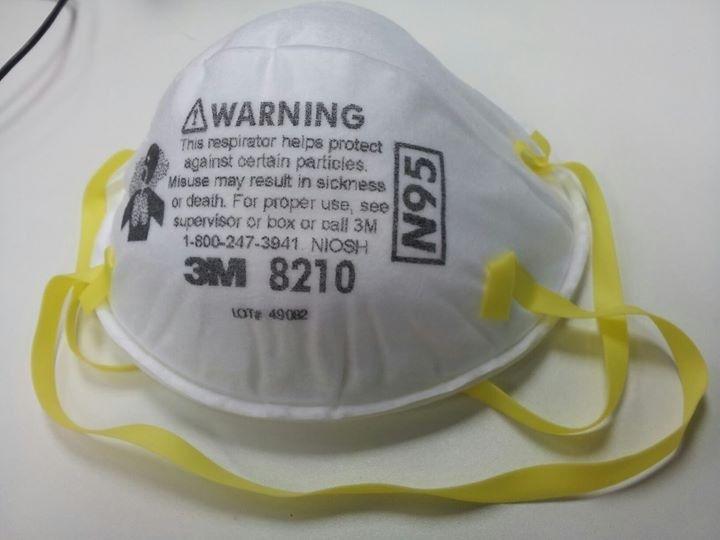Introduction
Respirators are essential personal protective equipment for workers exposed to airborne contaminants. Proper use, including donning (putting on) and doffing (taking off), is crucial to ensure that workers are adequately protected. This article, featuring general instructions for the two most common types of respirators, will help you understand the importance of following proper procedures and the manufacturer’s instructions for the specific respirator model you use.
Understanding the Basics: User Seal Check vs. Fit Test
Many workers confuse the terms “user seal check” and “fit test.” A user seal check is a method to verify that the respirator has been properly positioned on your face, assuring a proper seal. A fit test, on the other hand, is a more involved process that uses a test agent or instrument to verify the respirator’s fit. A fit test must be performed before you wear a respirator for the first time and at least annually thereafter. A user seal check must be performed each time you put on a respirator to ensure it has been donned correctly.
Disposable Filtering Facepiece Respirator (N95 or Dust Mask)
Here are general instructions for properly donning, doffing, and conducting a user seal check for a disposable filtering facepiece respirator:
- Inspect the respirator for damage; if damaged, replace it.
- Open the folds of the respirator fully, following the manufacturer’s instructions.
- Place the respirator on your face, with the nosepiece at your fingertips and headbands hanging freely. The respirator should cup your chin.
- Pull the top strap over your head, resting it high at the back of your head. Pull the bottom strap over your head and position it around your neck and below your ears. Be sure not to criss-cross the straps. Make sure that your mouth and nose are covered by the respirator.
- Mold the nosepiece to conform to the shape of your nose using both hands.
- Conduct a user seal check according to the manufacturer’s instructions. Generally, this involves covering the surface of the respirator with your hands and performing a positive pressure seal check (exhaling gently to see if the facepiece bulges slightly) and a negative pressure seal check (inhaling deeply to see if the facepiece collapses slightly).
- If air leaks between your face and the respirator’s faceseal, readjust the fit and check the seal again. If you cannot achieve a proper seal, do not enter a hazardous area and consult your supervisor.
- When finished wearing the respirator, carefully remove it without touching the exterior, which may be contaminated. Discard the respirator according to your company’s procedures.
Half Facepiece Elastomeric Respirator (Half Mask)
Here are general instructions for properly donning, doffing, and conducting a user seal check for a half facepiece elastomeric respirator:
- Inspect the respirator for loose, missing, or damaged parts; repair or replace as needed.
- Pull the bottom strap over your head.
- Place the respirator facepiece under your chin and over your nose, with the narrow part over your nose.
- Pull the head harness over the crown of your head and adjust its placement until it is stable but comfortable.
- Ensure that the neck strap is flat and smooth against the back of your neck. Adjust the neck strap, but be careful not to over-tighten the respirator to your face.
- Perform a positive pressure user seal check by placing the palm of your hand over the exhalation valve outlet and exhaling gently. Hold your breath to create and maintain a slight positive pressure inside the facepiece. If the facepiece bulges slightly and no air leaks are detected, a proper fit has been achieved. If you detect faceseal leakage, reposition the facepiece, readjust the straps, and retest.
- Perform the negative pressure seal check by covering the respirator cartridges or filters with the palms of your hands and inhaling gently. If the facepiece collapses slightly and no leaks are detected, a proper seal has been made. If you detect faceseal air leakage, reposition the respirator on your face, readjust the straps, and recheck. If you cannot achieve a proper seal, do not enter a hazardous area and consult your supervisor.
- When finished wearing the respirator, carefully remove it by loosening the straps and taking it off without touching the cartridges or filters, as they may be contaminated. Follow your company’s procedures for maintenance of the respirator, including proper cleaning, disinfecting, and storage.
Conclusion
Respirators play a crucial role in protecting workers from airborne contaminants in various workplaces. It is essential to follow the manufacturer’s instructions for the specific respirator model you are using to ensure proper donning, doffing, and user seal checks.
Remember that user seal checks are not a substitute for fit tests, which must be performed before wearing a respirator for the first time and at least annually thereafter. A user seal check must be conducted each time you put on a respirator to ensure it has been donned correctly.
Whether you’re using a disposable filtering facepiece respirator (N95 or dust mask) or a half facepiece elastomeric respirator (half mask), always inspect the respirator for damage, follow the manufacturer’s instructions for donning and doffing, and perform user seal checks to ensure a proper seal.
In addition, respirators must be used in the context of a comprehensive respiratory protection program as outlined by OSHA standard 29 CFR 1910.134. This includes proper training, medical evaluations, fit testing, and regular maintenance of the respirators.
By adhering to these guidelines and following the manufacturer’s instructions, workers can significantly reduce their exposure to airborne contaminants and maintain a safe working environment. Remember, your safety is your responsibility, and wearing a respirator correctly can make all the difference in protecting your health and well-being in the workplace.
References:










